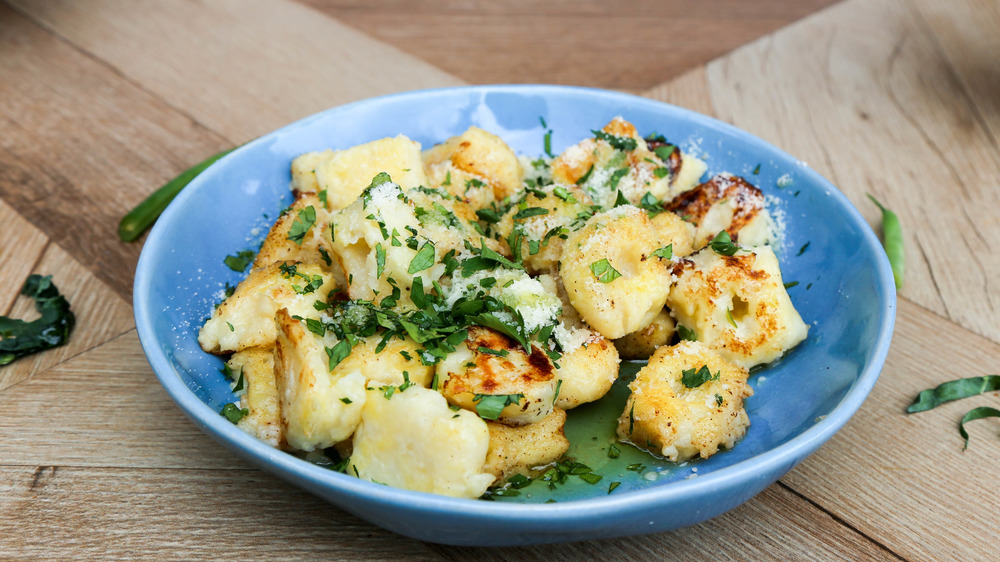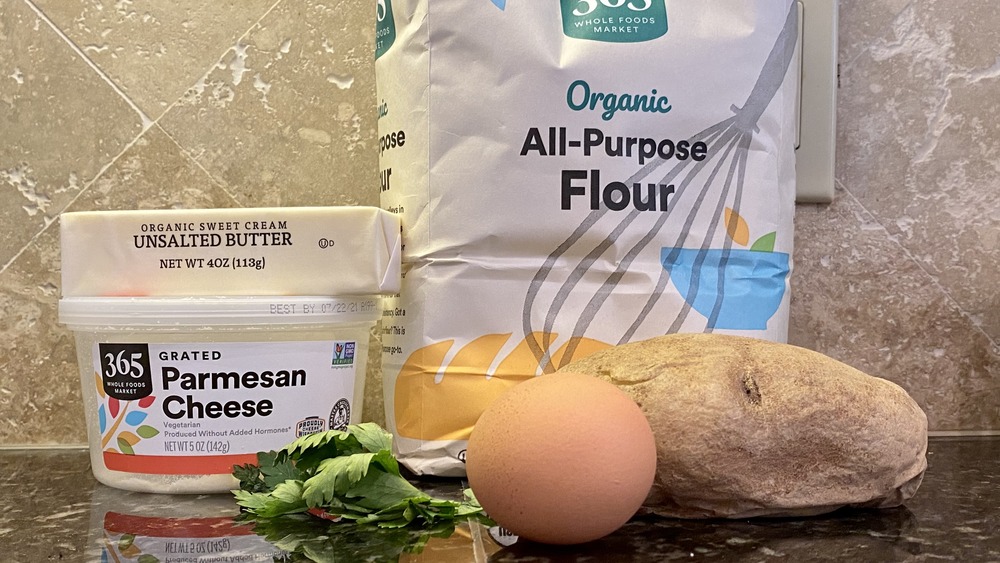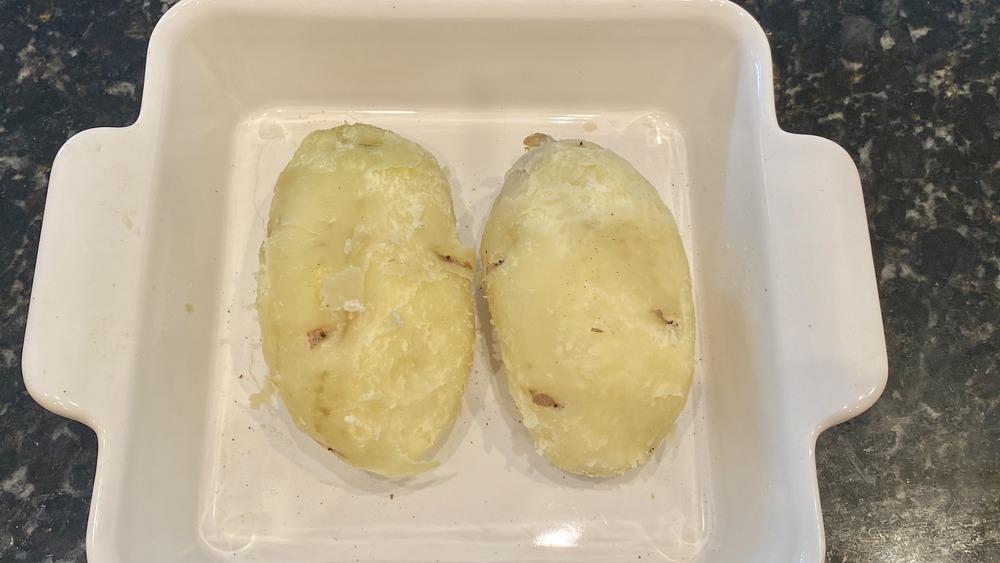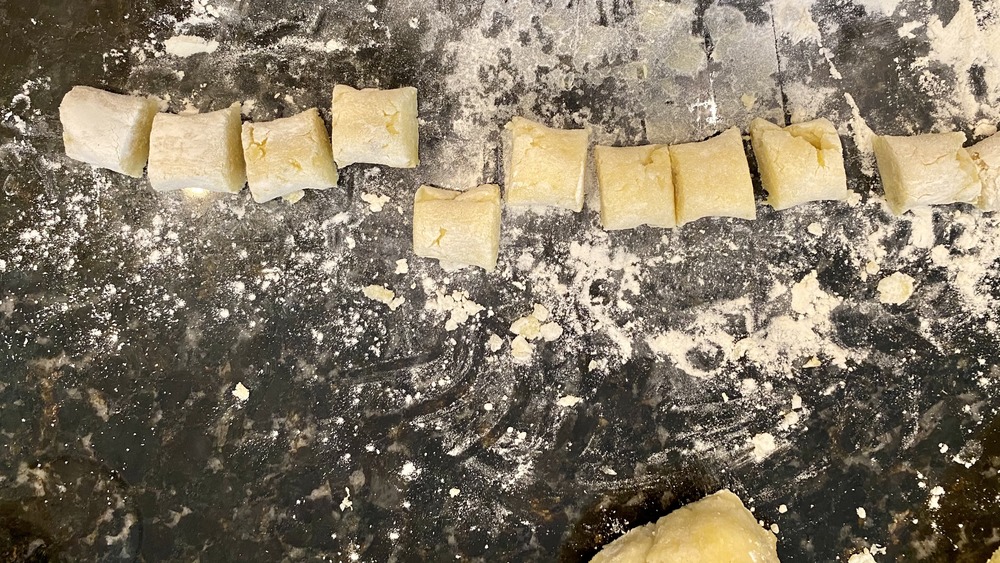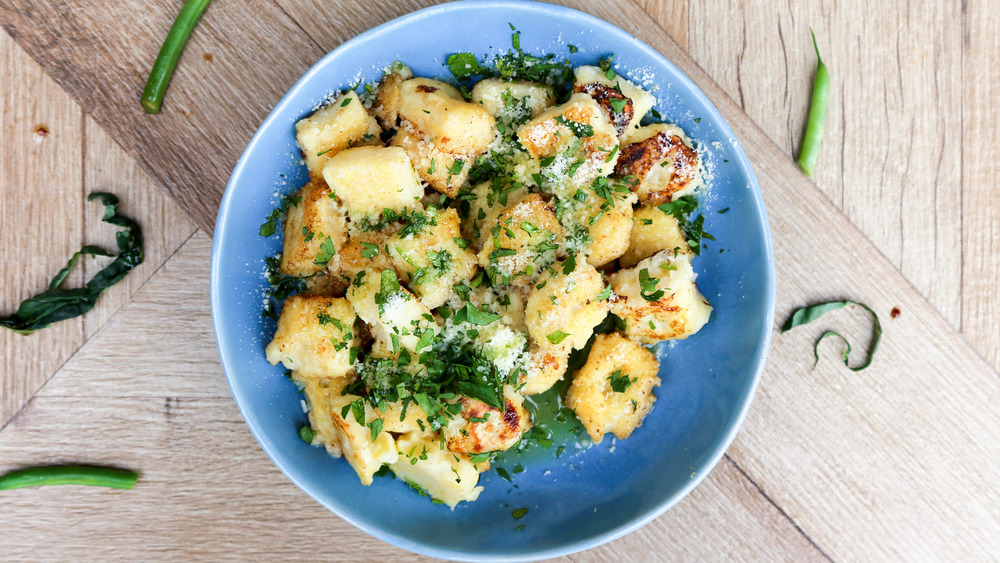Potato Gnocchi Recipe
Ask a dozen different chefs where gnocchi originated and what constitutes the best recipe for making it and you will likely get a dozen different answers. According to Saveur, "There are many regions that lay claim to the origins of gnocchi. While they are generally associated with northern Italy, the truth is that these dumplings are found all over the peninsula and in many diverse forms."
We'll spare you from the deeper, more divisive parts of the great gnocchi debate and instead share this refreshingly simple recipe for a classic take on this beloved potato pasta. Once you realize how easy it is to prepare gnocchi from scratch, it will make its way onto your dinner menu many nights a week, especially if you prepare a huge batch and save plenty for later.
According to chef and recipe developer Maren Epstein of Eating Works, "You can leave [uncooked] gnocchi in the freezer for up to three months before you cook it," adding that "gnocchi doesn't keep well once it has been cooked, so I would freeze them and cook right before you serve. They only take 3 minutes to make [from frozen]." Either way, don't be intimidated by the process, as this is delicious potato gnocchi that anyone can make.
Gather your ingredients for potato gnocchi
There's a very good chance you have everything you need to make fresh gnocchi from scratch in your kitchen already. And there's a beyond excellent chance that any grocery store in America has all the ingredients if you don't. If you're not counting the water and salt you'll use for boiling the finished pieces, all you need for this recipe are 2 white potatoes, ⅔ of a cup of all-purpose flour, 1 egg, 6 tablespoons of butter, 3 tablespoons of Parmesan cheese, and 2 tablespoons of parsley.
And do by all means scale up the recipe and plan to freeze plenty of uncooked gnocchi. Just make sure to cook the potatoes in batches if you do scale up, in order to avoid crowding the pan and prolonging the cooking time needed for the potatoes.
Cook then mash the potatoes for gnocchi
Usually, dried-out food is something you try to avoid when cooking. But here, it's exactly what you want to create when you prep the potatoes, which is exactly why Epstein loves cooking them in the microwave. "You could bake the potatoes but I wouldn't boil them," she sats. "I like to use the microwave because it dries out the potato the best. For the gnocchi to be light and fluffy the potato needs to be pretty dry."
For a pair of decent-sized potatoes, you should scrub them, give a few fork stabs, and then microwave the potatoes in a microwave-safe dish for 15 minutes. Now allow the potatoes to cool, then peel the skin off. Allow the potatoes to sit for at least an hour to allow the steam to fully escape. Next, use a potato ricer or a cheese grater to grate the potatoes, two kitchen tools which also make great mashed potatoes, by the way. If you don't have either, you may just mash them with a fork.
Make and cut potato gnocchi dough
Put the dry, mashed potato in a bowl and then begin to mix in ¼ of a cup of flour at a time, kneading gently until a dough forms. Once all the flour is added, turn the dough out onto a floured surface and continue kneading until the dough is even and smooth. Only knead for just as long as you need to make the dough even throughout, to ensure that you don't overmix and create too much chewy gluten.
Next, cut the dough ball into three even pieces and then roll them out into long tubes, each about 1 inch thick. Next, cut the tubes into 1-inch pieces. At this point, each piece should be roughly square-shaped. Finally, use your index finger to press a hole halfway down into each piece, which will later hold whatever sauce you choose to pair with the gnocchi.
Freeze then boil the potato gnocchi
Place the fully formed pieces of gnocchi in a clean dish or spread them on a plate and freeze them for 20 minutes. Meanwhile, bring a pot of salted water to a boil and place the butter in a skillet, ready for melting. Once the freezing is done and the water is at a rolling boil, place the gnocchi into the boiling water, and then turn on the heat under the skillet with the butter.
When the gnocchi pieces float to the surface they are done. Strain them and toss them into a second frying pan and sauté for a few minutes until one side of each piece has turned golden brown. Plate the gnocchi and then garnish with parsley and Parmesan cheese.
And if you want to add more flavor, Epstein has a great solution. "Gnocchi pairs well with butter," she says. "Lots of butter. You can also use different types of sauces like marinara or a white cream sauce."
Potato Gnocchi
Potato gnocchi is a beloved comfort that can scare some cooks. But don't be intimidated by the process, as this is delicious potato gnocchi that anyone can make
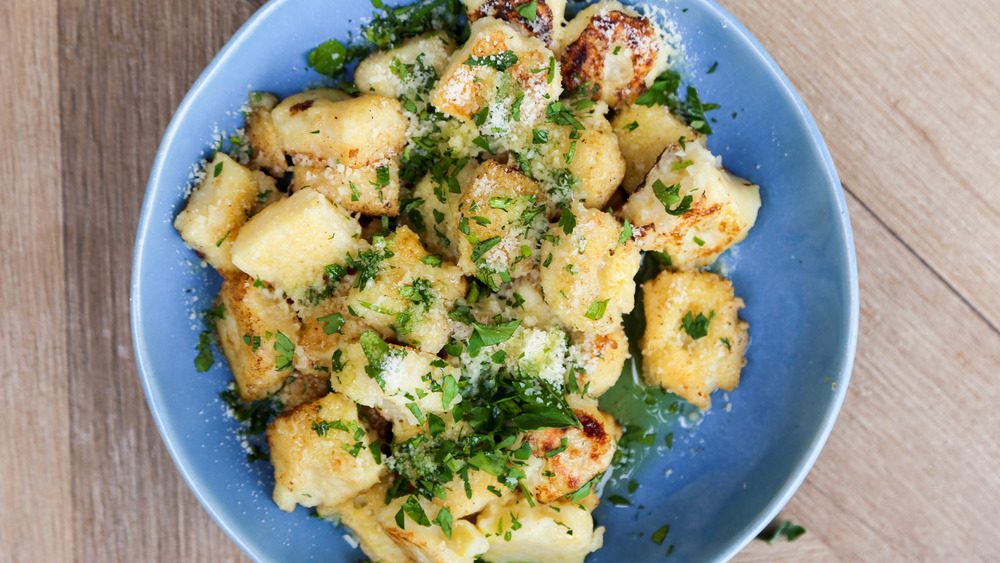
Ingredients
- 2 medium white potatoes
- ⅔ cup all-purpose flour
- 1 egg
- 6 tablespoons butter
- 3 tablespoons Parmesan cheese
- 2 tablespoons parsley
Directions
- Microwave the potatoes in a microwave-safe dish for 15 minutes, then allow them to cool and peel the skin off.
- Allow the potatoes to sit for at least an hour to allow the steam to escape. Then use a potato mill or a cheese grater to grate the potatoes, or mash them with a fork.
- Sift in ¼ cup of flour at a time and knead gently until a dough forms.
- Turn the dough out onto a floured surface and knead until the dough is smooth, trying to knead as little as possible to achieve a smooth dough.
- Cut the dough ball into three pieces and roll each into long tubes about 1 inch thick.
- Cut 1-inch squares of dough from the tubes, then use your index finger to press a hole halfway down into each piece.
- Place prepared pieces in a dish and freeze for 20 minutes.
- Bring a pot of salted water to a boil, and meanwhile melt butter in a skillet.
- Place the gnocchi into the boiling water. When the pieces float to the surface, they are done.
- Strain the cooked gnocchi and toss it into the frying pan with the butter.
- Sauté for a few minutes until one side of each piece turns gold brown, then plate and garnish with parsley and Parmesan cheese.
Nutrition
| Calories per Serving | 31 |
| Total Fat | 1.8 g |
| Saturated Fat | 1.1 g |
| Trans Fat | 0.1 g |
| Cholesterol | 8.0 mg |
| Total Carbohydrates | 2.9 g |
| Dietary Fiber | 0.3 g |
| Total Sugars | 0.1 g |
| Sodium | 11.7 mg |
| Protein | 0.7 g |
